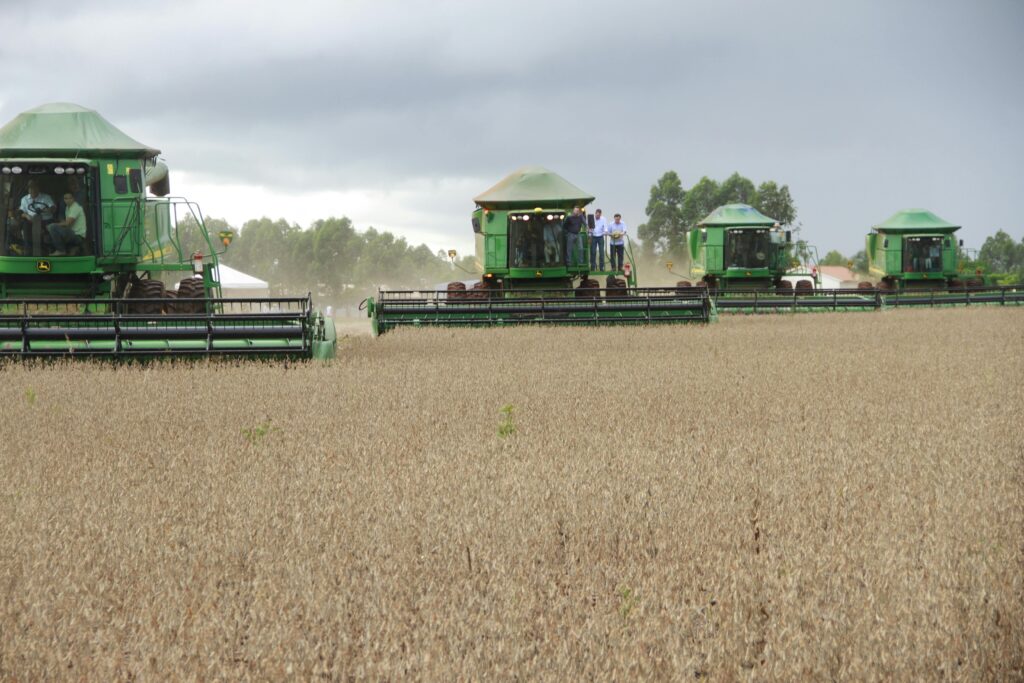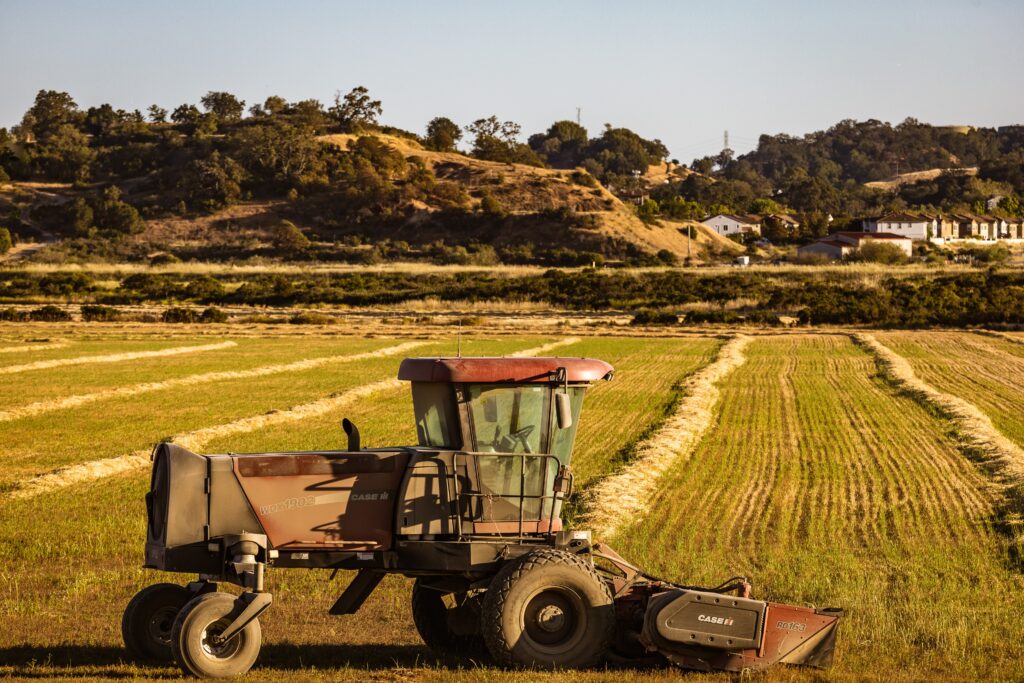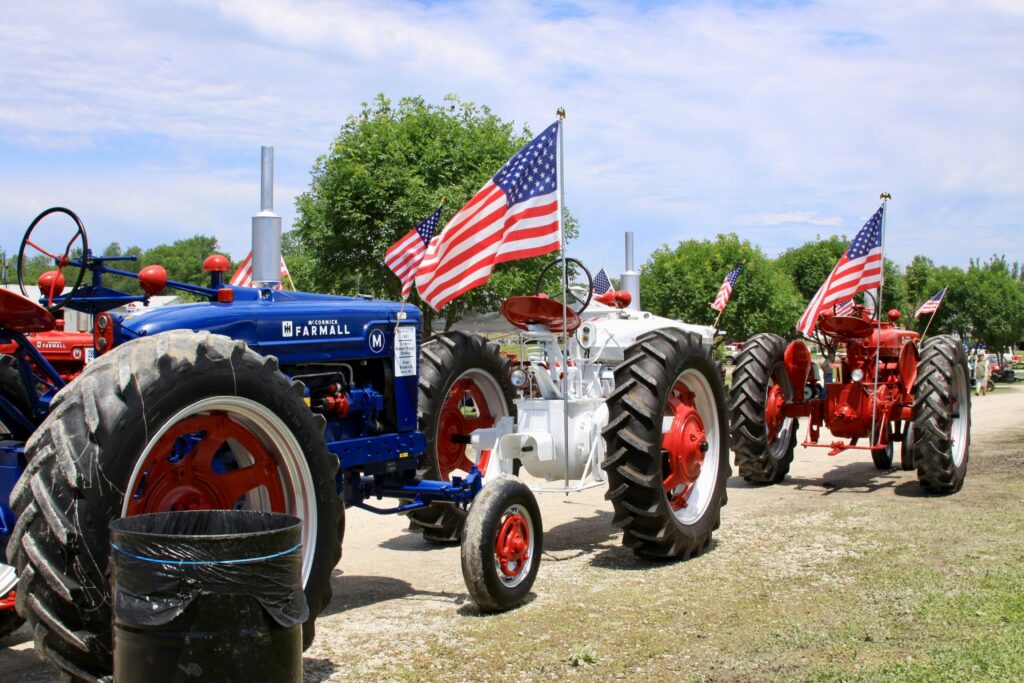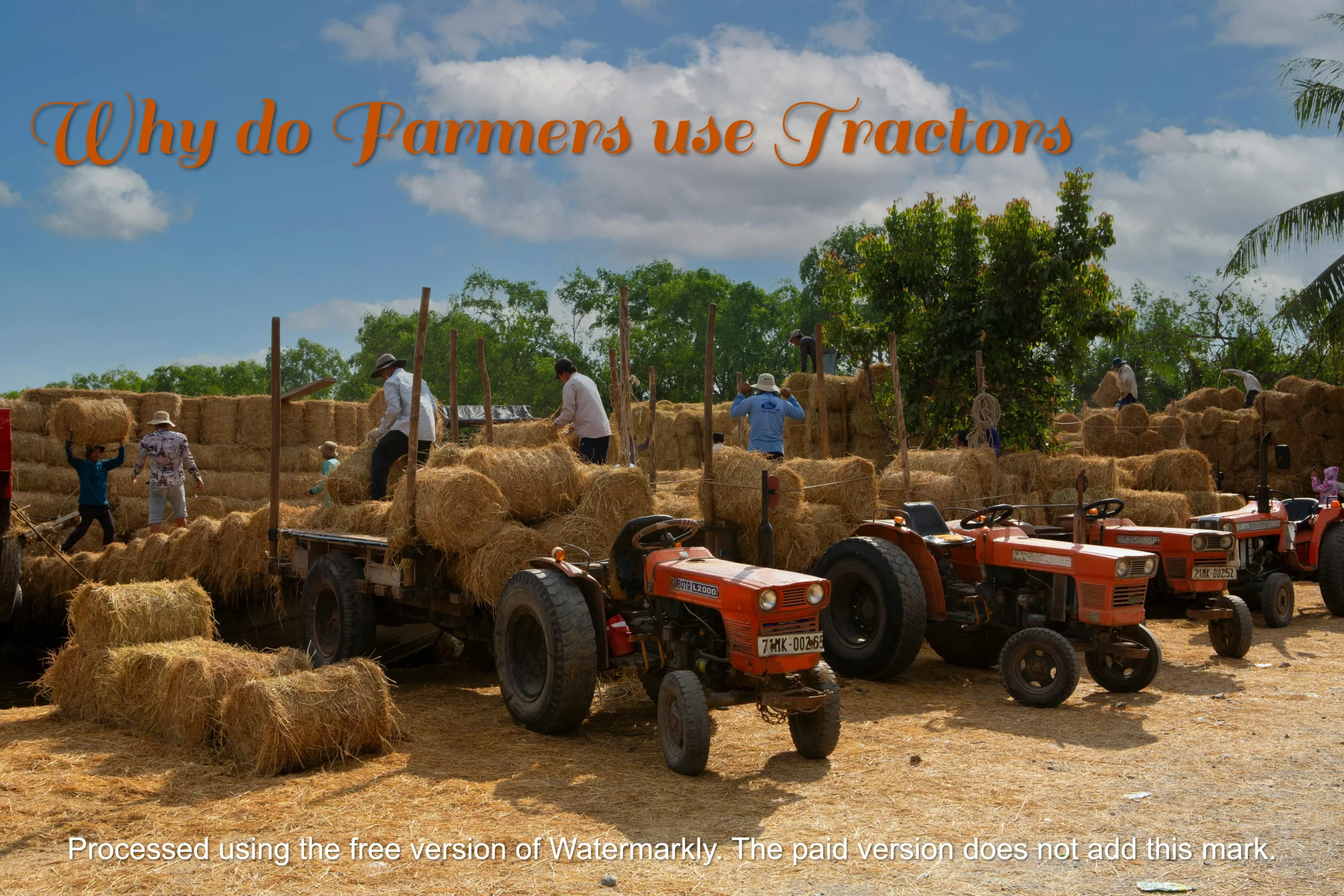Introduction
Tractors have become an indispensable part of modern agriculture. Farmers today rely on tractors to plow, plant, cultivate, and harvest crops efficiently and effectively. But tractors were not always a staple on farms. How did these powerful machines become so vital for farmers? There are several key reasons why tractors are extensively used in farming:
Increased Productivity and Efficiency
One of the main reasons farmers use tractors is that they dramatically increase productivity and efficiency on the farm. Before tractors, farmers had to rely solely on human and animal labor to work the land. Plowing, planting, weeding, and harvesting crops was extremely labor-intensive and time-consuming.
With a tractor, farmers can cover more ground in less time compared to manual labor. Tractors can pull specialized farming implements like plows, harrows, planters, and harvesters that get work done faster and more efficiently than just human or animal power alone. A tractor enables a farmer to manage more crops and larger areas of land.
This increased efficiency and productivity enabled by tractors allows farmers to maximize their yields and profits. Tractors revolutionized farming, taking it from a highly labor-intensive endeavor to a more automated and productive system.

Key Points:
- Tractors increased productivity and efficiency versus human/animal labor alone
- Farmers can cover more ground in less time with a tractor
- Specialized implements further boost productivity
- Increased efficiency enables farmers to manage more crops and larger farms
- This boosts yields and profits for farmers
Mechanization of Agriculture
Hand in hand with increased productivity, tractors also brought about the mechanization of agriculture. Farming transformed from a manual, labor-intensive job to a mechanized one. Tractors essentially replaced the hard labor that had to be done by human hands and animals.
With a tractor, activities like plowing that could take days or weeks with animals could be accomplished in hours. Precision equipment like seed drills, mechanical cultivators, and combine harvesters enabled farmers to mechanize and streamline planting, crop maintenance, and harvesting.
This shift to mechanized agriculture supported the growing productivity needs of farms. It reduced heavy labor and drudgery. Farmers could leverage machines and technology to work smarter, not just harder. Tractors served as the keystone for modern mechanized farming.
Key Points:
- Tractors brought about the mechanization of farming
- Labor-intensive manual tasks were replaced by tractors and equipment
- Planting, crop maintenance, harvesting became mechanized
- Mechanization supported growing productivity needs of farms
- It reduced heavy labor and drudgery for farmers
- Tractors were the keystone of modern mechanized agriculture

Farming More Land
With their improved productivity and mechanization capabilities, tractors enabled individual farmers to cultivate more land. In the past, the acreage a farmer could manage was limited by how much land he or she could plow, plant, cultivate and harvest manually. Even with animal assistance, those activities took time and human effort.
A tractor essentially multiplied a farmer’s land capacity. One farmer with a tractor could manage the same amount of land as multiple farmers without mechanized support. This expanded the scale of individual farming operations.
By boosting the land capacity per farmer, tractors supported the growth of larger farms and consolidated smaller family farms into bigger commercial operations. Bigger farms allowed farmers to improve profitability through economies of scale. The ability of tractors to help farmers cultivate bigger land areas was a major factor in their rise and mass adoption.
Key Points:
- Manual farming limited how much land a farmer could manage
- Tractors multiplied a farmer’s land capacity significantlyWhy do Farmers use Tractors
- Farmers could cultivate much more acreage with a tractor’s help
- This enabled larger, consolidated farming operations
- Bigger farms improved economies of scale and profitability
- Increased land capacity drove tractor adoption
Farming in Diverse Conditions
Tractors are valued by farmers for their ability to operate and work the land in diverse conditions. Tractors provide power, traction, and stability for plowing, planting, and hauling in different terrain and circumstances.
With their powerful engines and specialized tires, tractors can plow through densely packed soil. Their traction capabilities allow them to operate on wet, muddy ground where animals would struggle. Attachments like front loaders let tractors move heavy materials like logs, sand, and rocks for clearing and grading land.
Unlike animals, tractors do not get exhausted or distracted. They can work consistently under hot summer sun, through rain or snow, and in dusty conditions. This adaptability makes tractors reliable and robust farming partners in virtually any environment or topography a farmer needs to work.
Key Points:
- Tractors provide power, traction, stability in diverse conditions
- Can plow densely packed earth unlike animals
- Operate in wet, muddy conditions where animals struggle
- Attachments like front loaders move heavy materials
- Do not get exhausted or distracted like animals
- Can work consistently in any environment or topography

Variety of Implement Attachments
In addition to their robust chassis and engine, perhaps the most useful advantage of tractors for farmers is the wide variety of implements and attachments available. Different attachments can be equipped to the tractor to accomplish specialized tasks.
Common implement attachments:
- Plows for breaking up soil
- Harrows for smoothing and leveling soil
- Planters for sowing seeds at proper depth and spacing
- Sprayers for applying fertilizers, herbicides, pesticides
- Spreaders for distributing granular fertilizers and compost over soil
- Mowers and cutters for mowing fields and cutting crops
- Balers for baling cut hay and straw
- Loaders for lifting, carrying, and loading materials
And many more implements exist. This versatility of tractors, combined with swappable implements, is invaluable to farmers. One tractor can accomplish so many critical jobs on the farm by simply changing attachments. This multi-functionality makes tractors universal power units for farmers.
Key Points:
- Tractors support numerous specialized implements and attachments
- Common implements: plows, harrows, planters, sprayers, spreaders, mowers, etc.
- Implements adapt tractor for different jobs
- Multi-functionality with attachments is invaluable for farmers
- Tractors are universal power units thanks to swappable tools
Laborsaving Benefits
In addition to productivity and land benefits, tractors also provide important laborsaving advantages for farmers. Performing tasks like baling hay, cutting crops, loading materials, and digging holes becomes backbreaking work when done manually. Tractors allow most of these strenuous chores to be mechanized and accomplished with much less human effort.
With a tractor, farmers do not have to perform taxing physical work like lifting bales or bags all day long. Activities that required multiple strong men can be done efficiently by one farmer operating a tractor. The relief from grueling labor helps farmers stay healthier. Tractors let farmers focus their time and energy on skills like operating equipment, planning, and managing the farm while saving their bodies.
The laborsaving benefits of tractors make farming more sustainable as a career by reducing wear and tear on farmers’ bodies over decades of hard work. This helps attract and retain more farming professionals for the long-term support of agricultural systems.
Key Points:
- Tractors mechanize backbreaking tasks like baling, cutting, lifting
- Farmers avoid physically taxing work
- Challenging jobs needing multiple men can be done by one farmer with a tractor
- Laborsaving benefits help keep farmers healthier
- Farming becomes more sustainable career by reducing long-term wear and tear
- Helps attract and retain more farming professionals
Cost Savings
While requiring significant upfront investment, tractors can also deliver cost savings for farmers in the long run by reducing labor costs. Operating and maintaining tractor equipment is less expensive than hiring multiple farmhands. Tractors also complete work faster than manual labor, saving time and associated labor costs.
Tractor fuels like diesel may be expensive, but they ultimately facilitate huge cost reductions by eliminating major manual labor expenses. Tractors also increase yields through timely farming, reducing losses and waste that cut into profits.
By consolidating land under one farmer with a tractor, fixed costs can be spread across larger production volumes, improving economies of scale. Plus as technology improves, autonomous technologies may reduce active operating costs.

Key Points:
- While expensive upfront, tractors reduce labor costs long-term
- Operating tractors costs less than hiring multiple farmworkers
- Tractors complete work faster than manual labor
- Fuel costs offset by elimination of major labor expenses
- Increased yields reduce losses and waste, improving profits
- Consolidating land spreads fixed costs over larger volumes
- Emerging autonomous tech may further reduce operating costs
Consistent Speed and Timing of Farming Activities
Another key reason farmers adopted tractors was their ability to provide consistent speed and timing of crucial farming activities like planting and harvesting. Planting at consistent depths and spacing ensures even emergence and growth. Timely harvesting at peak ripeness maximizes crop quality and production.
With only human and animal power, the speed and timing of critical farming steps could vary significantly due to fatigue or performance fluctuations. Excessive variation damages crop yields. Tractors.
Improved Field Efficiency
Tractors help farmers maximize efficiency even within fields. Unlike animals that require paths, tractors can easily drive over crops, allowing farmers to efficiently access all parts of their fields. With animals, significant areas end up wasted in lanes and headlands.
Tractors allow farmers to better utilize all available land area. Advanced tractor guidance systems using GPS even enable hyper-accurate planting, fertilizing, and harvesting. Guidance systems optimize routing for reduced overlap and minimum missed ground.
This precision leads to better crop uniformity and improved yields. Tractors make farming operations within fields significantly more efficient.
Key Points:
- Tractors easily drive over crops unlike animals along lanes
- Allows farmers to access all field areas efficiently
- With animals, substantial field areas are wasted
- Tractors better utilize available land area
- GPS guidance enables hyper-accurate operations
- Optimized routing improves crop uniformity and yields
- Significantly improves in-field efficiency
Power for Operating Other Equipment
In modern farming operations, tractors provide crucial power not just for tillage and planting but for running other equipment. Stationary systems like grain handling equipment, irrigation pumps, and cooling systems for produce storage rely on tractors for power.
Tractors can power belt-driven equipment directly or provide mobile electric power using PTO generators. Farm infrastructure depends on tractor engines for energy, especially in remote areas.
With powerful on-board hydraulics, tractors can drive pumps and motors to operate attachments. Removing bales from fields, pumping liquid manure spreading, and powering cultivators are made possible by a tractor’s hydraulic system.
This versatility as a mobile power unit makes tractors indispensable for powering all kinds of farm machinery and operations. Tractor engines are the heartbeat energizing an entire farming enterprise.
Key Points:
- Tractors provide power for grain handling systems, irrigation, cooling systems
- Can directly power belt-driven stationary equipment
- Serve as mobile generators to produce electricity via PTO
- Farm infrastructure depends on tractor engines for energy
- Hydraulics enable operating powered attachments
- Versatility as a mobile power unit is invaluable
- Tractor engines energize the entire farming operation
Continued Innovation and Progress in Farm Technology
Finally, tractors have enabled continued innovation and technology adoption on the farm. Early steam and diesel tractors paved the way for farmers to switch from manual methods. This trajectory of progress has continued over decades.
With tractors, farmers could take advantage of mechanization, motorization, automation, and now AI and autonomous technologies. Precision agriculture leveraging data, sensors, and analysis would not be possible without digitally connected tractors.
Tractors enabled farming practices and equipment to evolve dramatically. Each leap forward amplified productivity and efficiency. Without tractors, farm technology would have stagnated. Tractors continue to drive innovation in agricultural systems today.

Key Points:
- Early tractors paved way for transition from manual farming
- Tractors enabled ongoing farm technology innovation for decades
- Mechanization, motorization, automation made possible
- Now enabling precision agriculture with data and autonomy
- Farm practices and tools have evolved dramatically
- Productivity and efficiency jump with each tech leap
- Farm technology stagnated without tractors
- Remain key driver of ag innovation today
Conclusion
In summary, farmers adopted tractors for numerous compelling reasons, including increased productivity, mechanization, expanded land capacity, laborsaving benefits, cost savings, consistent timing of tasks, field efficiency, power generation, and ongoing innovation.
Tractors delivered powerful advantages not achievable with human and animal labor alone. They revolutionized farming, enabling the development of modern industrial agriculture. Tractors hugely benefited farmers as well as consumers with reliable, affordable food production.
The onset of automation and advanced technologies will only expand tractors’ capabilities. Tractors are firmly established as an indispensable technology for feeding the world. Farmers will continue relying on these machines far into the future.
Frequently Asked Questions
What were some key benefits of tractors for farmers?
Some major benefits tractors offered farmers included increased productivity, more mechanization, ability to farm more land, laborsaving physical relief, lower long-term costs, consistent timing of tasks, better field efficiency, mobile power generation, and support for adopting new technologies over time.
How did tractors increase productivity?
Tractors increased productivity through mechanized equipment that could cover much more ground faster and more efficiently than human or animal labor alone. Implements like plows, planters and harvesters enabled farmers to be dramatically more productive.
How did tractors help farmers manage more land?
With their labor-saving and productivity boosting abilities, tractors enabled individual farmers to cultivate much larger areas of land. Activities that took multiple men days before could be done by one farmer with a tractor in hours.
What types of difficult tasks were made easier with tractors?
Tractors mechanized backbreaking tasks like baling hay, cutting crops, loading and unloading materials, digging holes and trenches, clearing and grading land, and hauling heavy materials. This saved farmers much hard physical labor.
How did tractors provide consistent speed and timing?
Unlike tired humans and animals, tractors work at an optimized constant pace and enable timely execution of planting, crop maintenance, and harvesting for maximize quality and production. Removing variability improved yields.
How did tractors reduce costs for farmers?
While expensive to purchase, tractors saved farmers money over time by eliminating multiple labor expenses. Operating tractors was cheaper than hiring many farmhands long-term. Increased efficiency also reduced losses and waste.
What innovations became possible thanks to tractors?
Tractors paved the way for mechanization, motorization, and automation of farming. Tractors are now enabling precision agriculture with GPS, data analysis, autonomous equipment, and more. They drove most technology advances in farming.
